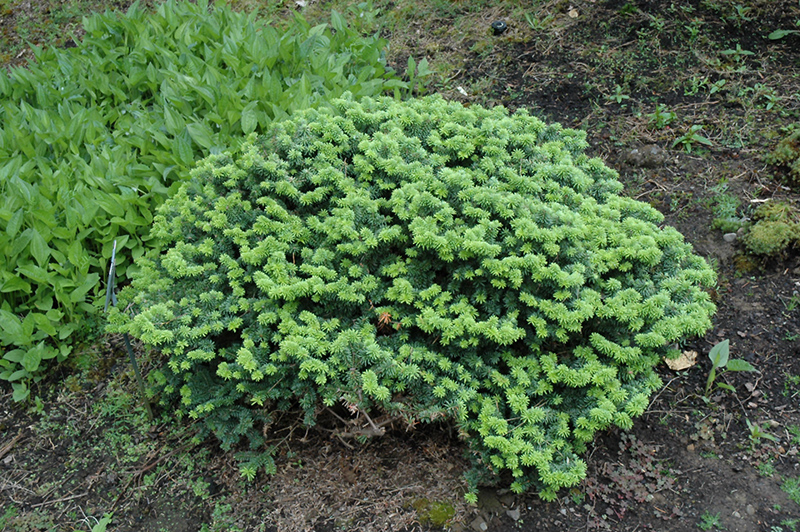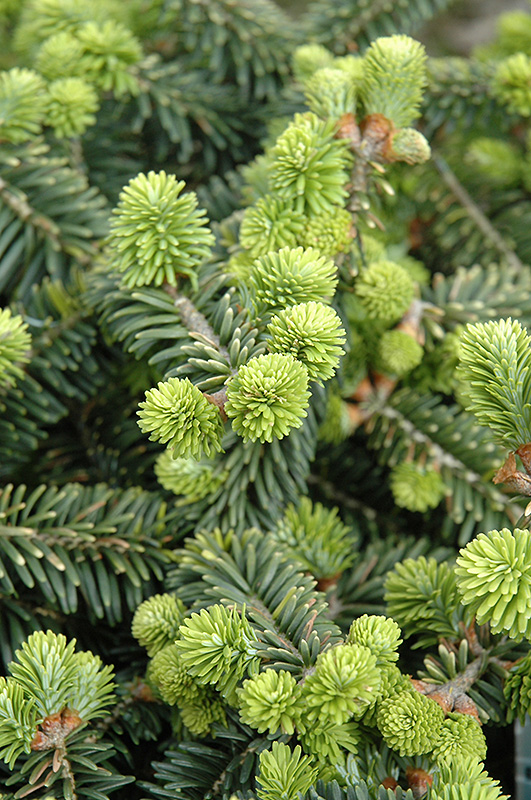Height: 24 inches Spread: 3 feet
Sunlight:
Hardiness Zone: 1b Description: A dark green evergreen shrub with a mounded habit, suitable for use as garden detail or in a rock garden; prefers moist, acidic soils but should do well in most garden soils, best in full sun Ornamental Features Fir, Dwarf Balsam is a dwarf conifer which is primarily valued in the garden for its ornamental globe-shaped form. It has dark green evergreen foliage. The needles remain dark green throughout the winter. Landscape Attributes Fir, Dwarf Balsam is a dense multi-stemmed evergreen shrub with a more or less rounded form. Its relatively fine texture sets it apart from other landscape plants with less refined foliage. This is a relatively low maintenance shrub, and should not require much pruning, except when necessary, such as to remove dieback. It has no significant negative characteristics. Fir, Dwarf Balsam is recommended for the following landscape applications; Planting & Growing Fir, Dwarf Balsam will grow to be about 24 inches tall at maturity, with a spread of 3 feet. It tends to fill out right to the ground and therefore doesn't necessarily require facer plants in front. It grows at a slow rate, and under ideal conditions can be expected to live for 50 years or more. This shrub performs well in both full sun and full shade. It prefers to grow in average to moist conditions, and shouldn't be allowed to dry out. This plant should be periodically fertilized throughout the active growing season with a specially-formulated acidic fertilizer. It is particular about its soil conditions, with a strong preference for sandy, acidic soils. It is quite intolerant of urban pollution, therefore inner city or urban streetside plantings are best avoided. Consider applying a thick mulch around the root zone over the growing season to conserve soil moisture. This is a selection of a native North American species. Special Attributes Evergreens need to be watered during the winter. Our desert climate especially in late winter to early spring evergreens can suffer during next growing season. An easy way to remember check for dryness on the holidays Halloween, Thanksgiving, New Year's Day, Valentines Day & Easter.![]()
![]()
![]()
![]()
![]()
![]()
![]()
![]()
![]()
![]()


